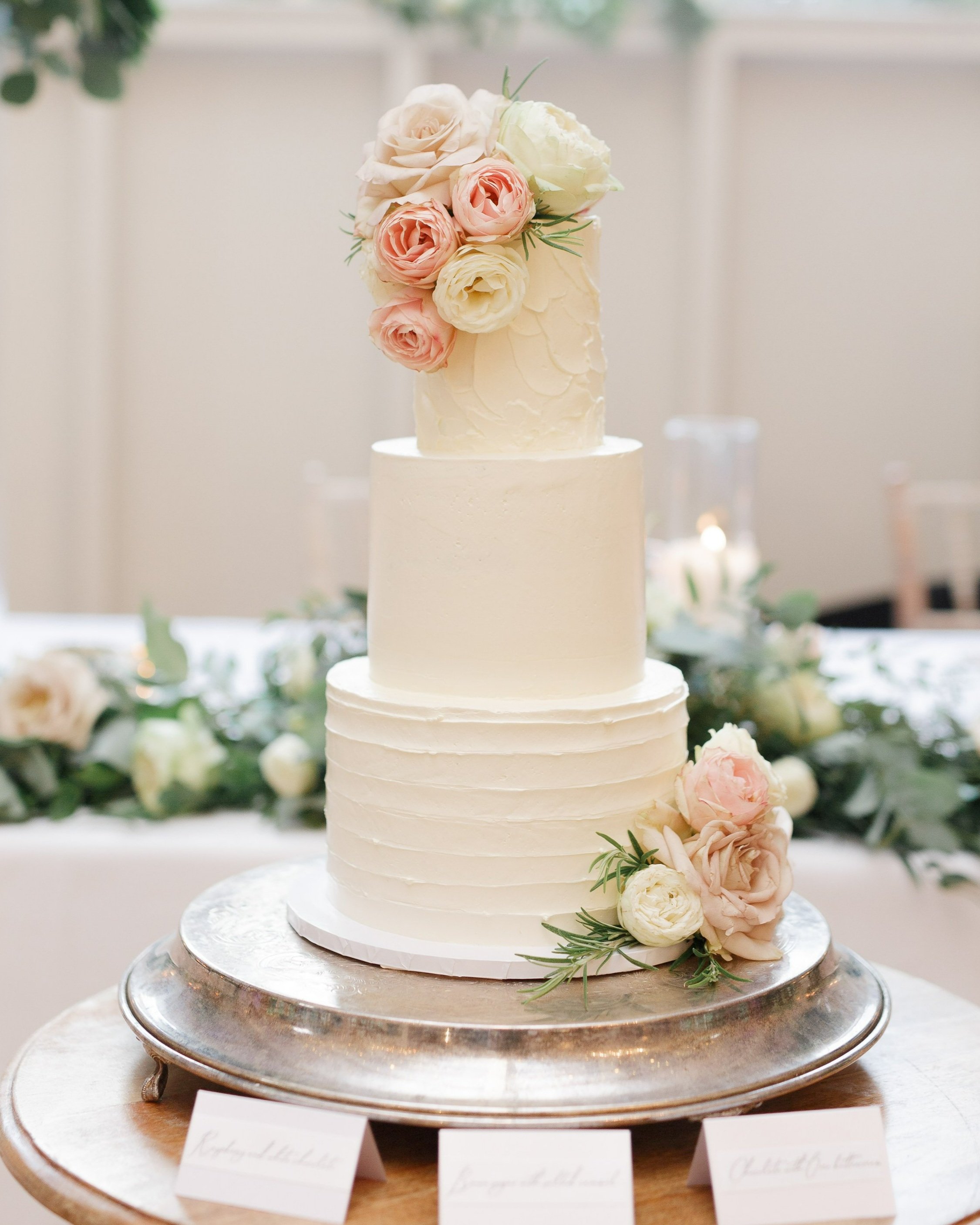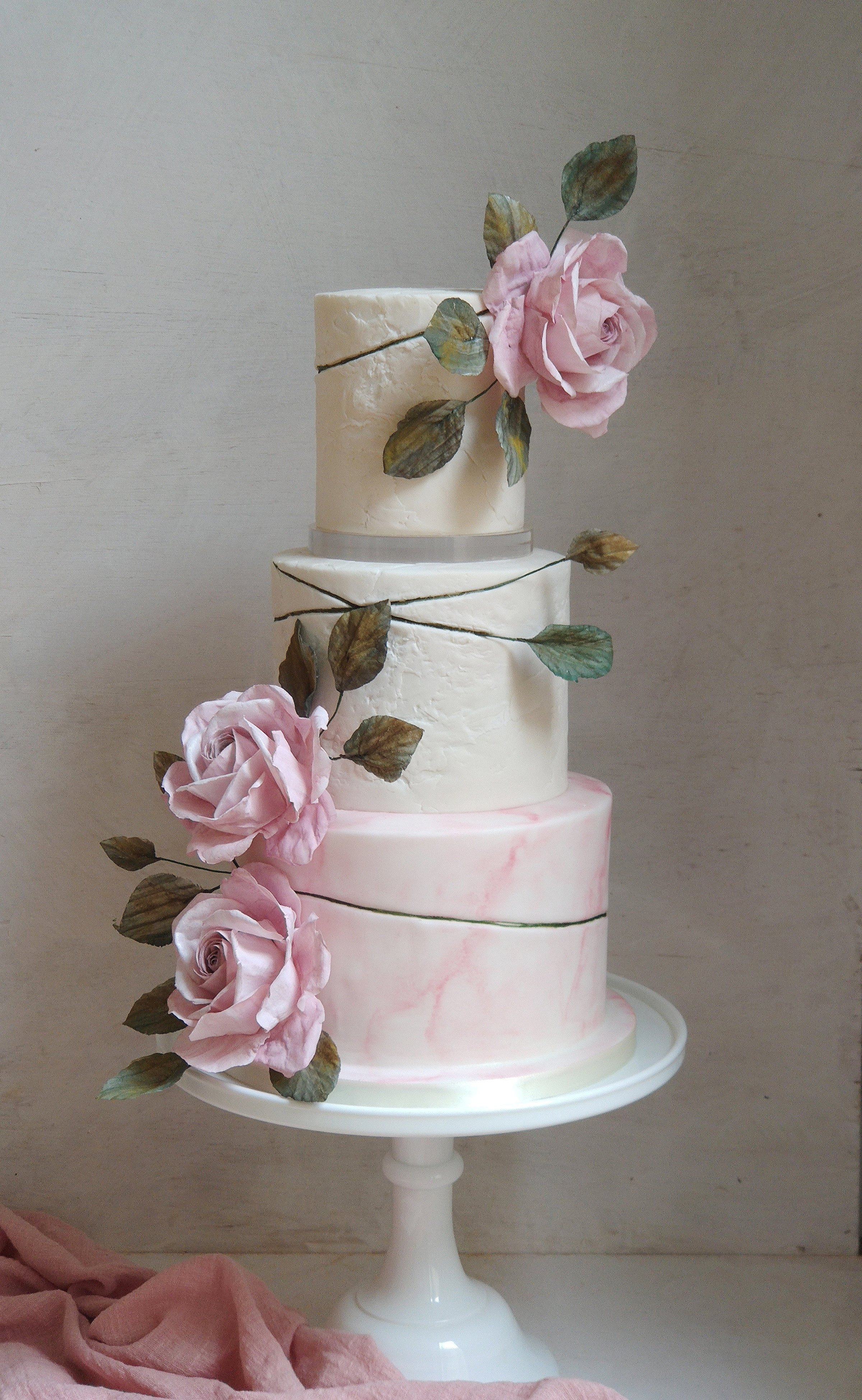Wedding cake icings - Buttercream, semi-naked, fondant? What’s the difference?
So you’re enjoying the excitement of wedding planning and your Pinterest finger is throbbing with all that pinning action. You’ve collated an inspiration board of beautiful wedding cake designs and you’re all set for your wedding cake consultation…
But wait.
What on earth am I asking for? Is it a fully-iced buttercream cake, semi-naked cake, naked cake, fondant cake…? Hell, it could be bikini-clad for all I know! Whatever happened to just ordering a cake, plain and simple, without all this talk of its state of undress?
More often than not, couples aren’t entirely sure what they’re asking for and what the implications are of their chosen cake covering, so let me explain…
Naked Wedding Cakes
Semi-naked buttercream wedding cake with gold leaf
Let’s get down to basics; a naked cake is a cake in its birthday suit, not even a jot of underwear to cover its modesty. It’s essentially layers of sponge filled with jam and/or buttercream.
Usually decorated with fresh fruits and flowers, these cakes have a rustic, home-baked look and are great for those who want something simple and understated for their wedding day.
Don’t be deceived however, they may look easy but they are tricky to get right, as there’s nowhere to hide. Those layers need to look spot on perfect with just the right amount of buttercream oozing temptingly between them. As they are prone to drying out quickly, without the moisture-locking magic of buttercream or fondant, they must also be made as close to the wedding day as possible.
Semi Naked Wedding Cakes
Here we give the cake a smattering, a light negligée if you will, of buttercream. A semi-naked cake has a thin covering of buttercream, which has been scraped back to reveal a peek of the sponge showing through.
They are commonly used for rustic themed weddings and adorned with fresh flowers and the buttercream helps to seal in the sponge, making for a moister cake. If you opt for different flavours for each tier, and therefore possibly different colour sponges, then this can add to the design.
Again, don’t be fooled that this is an easy, just slap it together, cake to make. Getting those sharp edges can be tricky and buttercream is a messier medium to use than fondant, which reminds me, buttercream cakes don’t react well to boiling hot marquees. Bakers do have some tricks up their sleeves to mitigate the effects of a heatwave but your cake can only bear so much heat in the midst of summer!
Fully iced buttercream cake. Image by White Stag Weddings
Fully Iced Buttercream Wedding Cakes
Cloaked in a thick velvety layer of buttercream, fully iced cakes can be as smooth or ridged and textured to create interest. It doesn’t always have to be white either, opt for a different colour buttercream to make your cake pop and you can go dark with it too. Warm greys and navy blues coupled with splashes of vibrant colour can be really eye-catching.
Modern, art-inspired designs using buttercream applied with a palette knife, as if it were an oil painting, are very on trend and with a splash of metallic splatter or gold leaf, your cake could be a real showstopper. Don’t be afraid to be different and let your cake be an expression of you.
Fondant Wedding Cakes
Fondant wedding cake
Now this is where your wedding cake comes fully dressed with belts and braces! Each tier of filled sponge layers is first covered in a crumb coat of Belgian chocolate ganache to seal in the moisture and provide a perfect foundation for covering. It is then cloaked in a thin layer of fondant icing, complete with crisp sharp edges to create the perfect canvas for decorating.
Personally, I find that fondant is the most versatile and allows for techniques such as hand painting, textures, bas relief and many more and it enables me to be at my most creative. It’s also great for the summer months as it will stand up well in the heat.
I often hear from couples that they don’t like the taste of fondant but please don’t let the memory of supermarket birthday cakes influence your choice here. High quality fondant used by professional bakers is a big step away from the thick sickly fondant you may have experienced before. It can be rolled thinly and the taste lends itself to marshmallowy rather than pure sugar!
The last crumb…
Ultimately, whichever cake covering you decide upon, your cake designer can advise you on the best method of decoration and the pros and cons for each one. Some cake designers prefer to work with only one type of icing so it’s good to do some research beforehand when shortlisting your supplier.
Now go forth, taste some delicious cake but just make sure you’re decent. Only cakes get naked round here…



